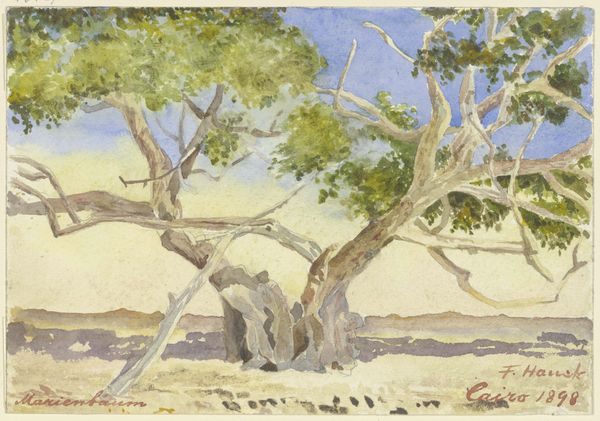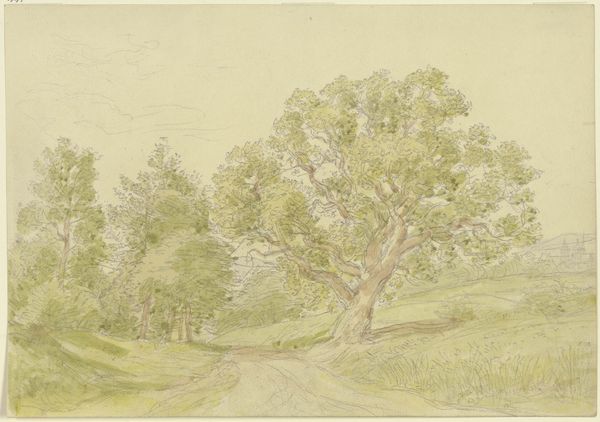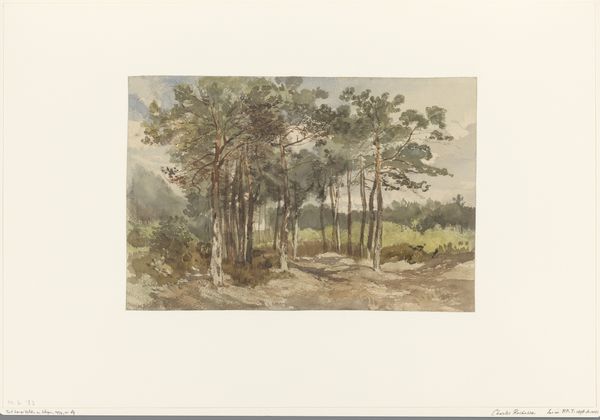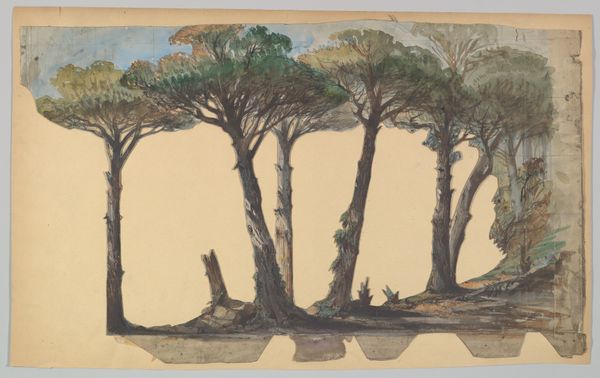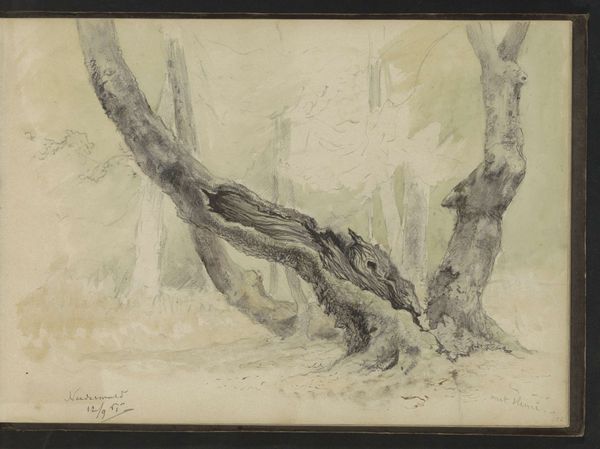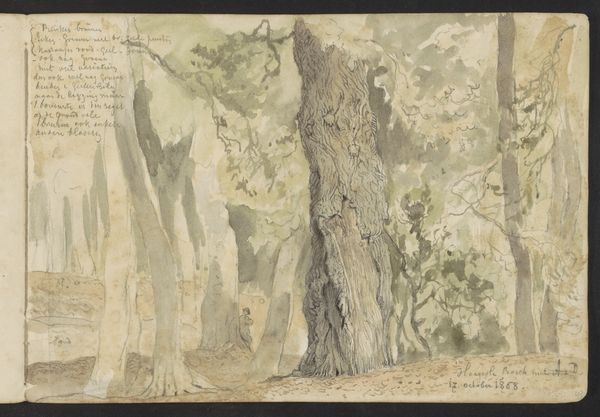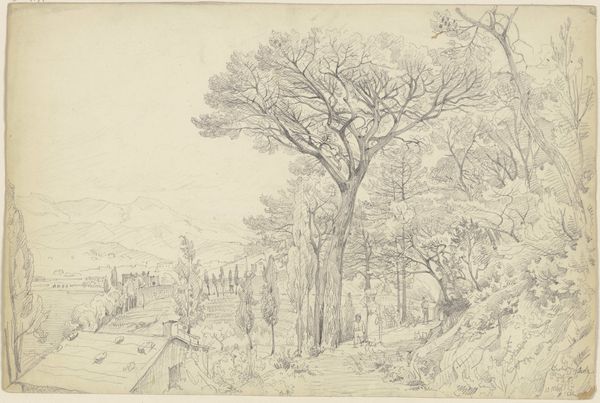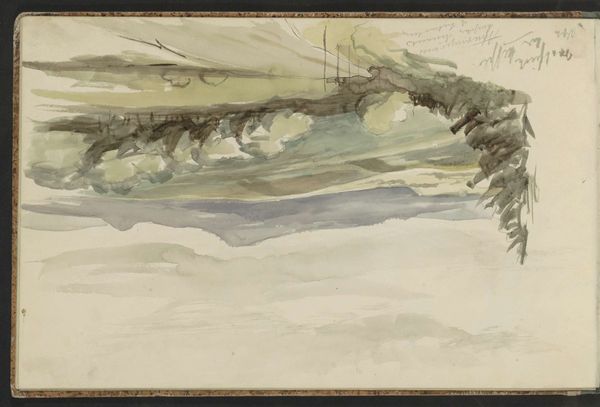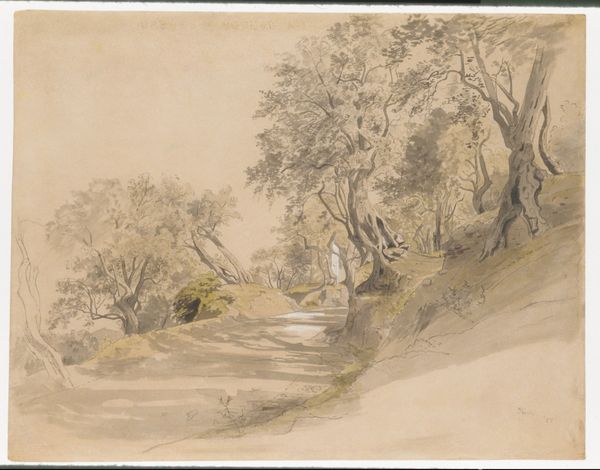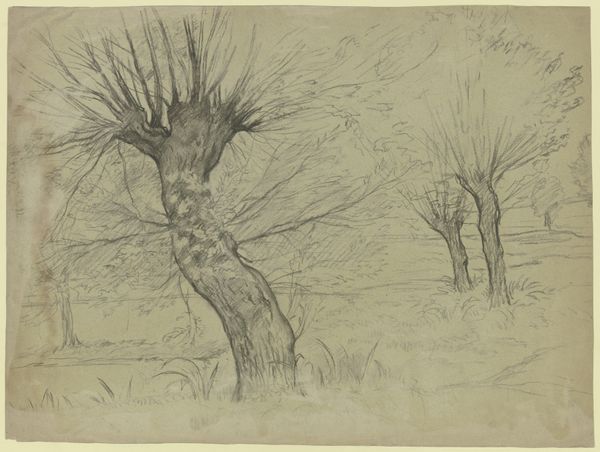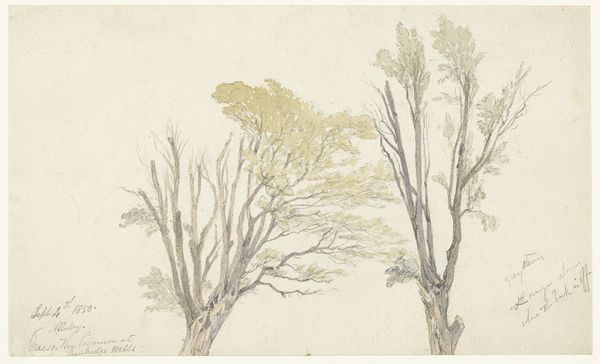
drawing, plein-air, paper, watercolor, ink, graphite, pen
#
drawing
#
ink painting
#
plein-air
#
landscape
#
paper
#
handmade artwork painting
#
watercolor
#
ink
#
orientalism
#
graphite
#
pen
#
watercolor
#
realism
Dimensions: 365 × 551 mm
Copyright: Public Domain
Curator: Edward Lear, most well-known for his nonsense poetry, was also a prolific landscape artist. Here we have "The Cedars of Lebanon," a watercolor and ink drawing from 1858, now residing at the Art Institute of Chicago. Editor: Whoa, instantly serene. Those ancient cedars feel almost like benevolent giants, watching over everything. There’s a quiet grandeur to the scene. Curator: The work fits neatly into the tradition of Orientalism that was popular at the time. Lear traveled extensively in the Near East, and he aimed to capture the "authenticity" of these locations in his art, of course always through his own cultural lens. Editor: I find it fascinating how the landscape feels both realistic and slightly dreamlike. Like a memory. You can almost feel the dry air and smell the resin of the cedars. It's very evocative, despite its muted palette. What kind of statement do you think he was hoping to make? Curator: It's difficult to definitively state Lear's intention, but cedar trees, particularly the Cedars of Lebanon, held symbolic significance. They represent longevity, strength, and even immortality—culturally loaded icons for European audiences at the time. His plein-air style reflects a desire to record the 'real,' but inevitably imbued with romantic sentiment. The use of watercolor captures fleeting effects of light and atmosphere... Editor: Right! Like those two figures in the foreground that become dwarfed by these enormous beings, that for me says so much. It reminds me that every moment we experience is simultaneously epic and unbelievably tiny. I feel so centered just looking at it, I feel like those ancient trees are telling me that whatever's stressing me right now will pass. That my moment, is well, just a moment. Curator: Indeed, that contrast is very striking. Lear leverages both his draftsmanship and emotional register to create a profound meditation on nature, culture, and the self. These historical contexts shape not only how we appreciate art but, for the museum, how we engage with its evolving meaning. Editor: Exactly. Art becomes this kind of connective tissue, where history brushes up against our immediate felt experience. Curator: Absolutely. This drawing reminds us to observe closely, think critically, and feel deeply. Editor: Well said! Now, I'm going to go hug a tree, but probably something a little more local!
Comments
No comments
Be the first to comment and join the conversation on the ultimate creative platform.
